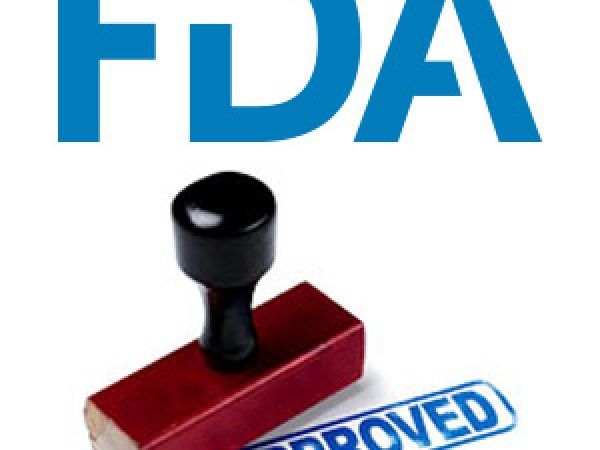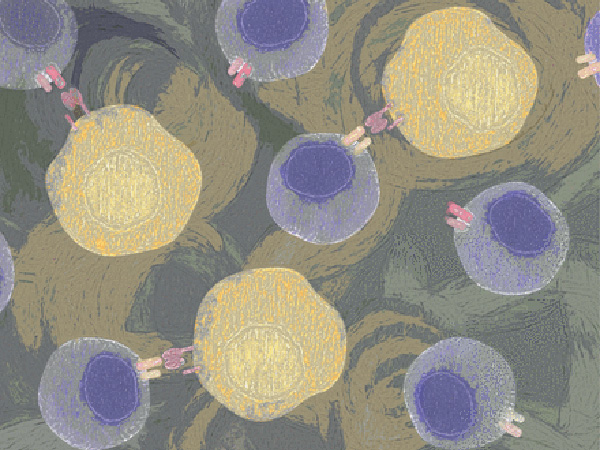AACR Annual Meeting 2021: Data from Practice-changing Phase III Clinical Trials Signal New Treatment Options for Many Cancer Types
This year at the AACR Annual Meeting, the premier cancer meeting in the world, data from clinical trials testing the latest cancer treatments were featured in three Clinical Trial Plenary Sessions, four minisymposia, and in several poster sessions.
Several of these clinical trials have the potential to change the way patients are treated. This reflects the Annual Meeting’s reputation as a premier forum for clinical research.
In an interview for the AACR News, the official news source of this year’s Annual Meeting, Manuel Hidalgo, MD, PhD, co-chair of the AACR Annual Meeting Clinical Trials Committee, noted, “We were not only very pleased with the number of clinical trial abstracts that were submitted this year, but also very impressed by the breadth of concepts, including important studies exploring early to late drug development, new molecular entities targeting known alterations, and optimizing noninvasive ways that we can assess cancer.”
Julie R. Brahmer, MD, MSc, co-chair of the AACR Annual Meeting Clinical Trials Committee, said, “Being able to highlight so many potentially practice-changing studies at the Annual Meeting is quite meaningful and demonstrates how translational the meeting and the field of cancer research have become.”
During the first Clinical Trials Plenary Session, Phase III Clinical Trials, which was dedicated to the memory of AACR Past President José Baselga, MD, PhD, FAACR, data were presented from clinical trials that could potentially lead to new treatment options for certain patients with relapsed/indolent non-Hodgkin lymphoma, metastatic uveal melanoma, and resectable non-small cell lung cancer.
Copanlisib-Rituximab Combination Cuts Relapsed Indolent Lymphoma Progression or Death by 48 Percent
Lymphoma cells often rely on the PI3K cell-signaling pathway for survival, and activation of PI3K plays a role in the resistance to rituximab. Copanlisib is a potent PI3K inhibitor approved as monotherapy for patients with follicular lymphoma, a common indolent lymphoma, whose disease has relapsed after at least two courses of prior treatment.
In the phase III CHRONOS-3 trial, patients with relapsed indolent non-Hodgkin lymphoma were randomly assigned 2:1 to copanlisib plus rituximab or to placebo plus rituximab. The majority of the patients (60 percent) had follicular lymphoma; 20.7 percent had marginal zone lymphoma, 10.9 percent had small lymphocytic lymphoma, and 8.3 percent had lymphoplasmacytic lymphoma/Waldenström macroglobulinemia.
In CHRONOS-3, after a median follow-up of 19.2 months, the study met its primary endpoint of progression-free survival (PFS) with a 48 percent reduction in the risk of lymphoma progression or death in the copanlisib-rituximab arm. PFS benefit was seen in all subtypes of lymphoma. Median PFS was 21.5 months in the copanlisib-rituximab arm and 13.8 months in the placebo-rituximab arm. About 34 percent of patients in the copanlisib-rituximab arm had complete response, versus 14.6 percent in the placebo-rituximab arm.

Study presenter Matthew J. Matasar, MD, associate member of Lymphoma Service at Memorial Sloan Kettering Cancer Center, explained in a press release that prior studies that tested the daily orally administered PI3K inhibitors idelalisib and duvelisib resulted in severe toxicity, including deaths, leading to early termination of those clinical trials. Because copanlisib is administered intravenously on an intermittent schedule, such side effects were lowered compared with the previously tested oral PI3K inhibitors, he noted.
“We are glad to see that copanlisib could be safely combined with rituximab for the long-term treatment of patients with relapsed indolent non-Hodgkin lymphoma,” Matasar said. “To my knowledge, this is the first study to report such a broad benefit in patients with relapsed indolent non-Hodgkin lymphoma.”
First-in-class Bispecific Fusion Protein Tebentafusp Improves Survival in Patients with Metastatic Uveal Melanoma
Uveal, or ocular, melanoma is a rare cancer overall and represents 3 to 5 percent of all melanomas, but they are the most common eye cancers in adults and they generally have a very poor prognosis, explained study presenter Jessica Hassel, MD, associate professor and section head of DermatoOncology in the Department of Dermatology and the National Center for Tumor Diseases at the University Hospital Heidelberg in Germany.

Tebentafusp is a first-in-class soluble affinity-enhanced T-cell receptor (TCR) and an anti-CD3 scFv fusion protein designed to direct T cells to the tumor. One end of the fusion protein recognizes gp100—a melanoma-associated antigen—through a high-affinity T-cell receptor-binding domain, and the other end recognizes the anti-CD3 T-cell engaging domain. The T-cell engaging domain redirects T cells to kill gp100-expressing tumor cells. The T-cell receptor-binding domain can only recognize a specific gp100-derived peptide presented on HLA-A*02:01; therefore, tebentafusp can only be used to treat patients with this HLA type. However, roughly 50 percent of Caucasians, the population most affected by uveal melanoma, have this HLA type, according to Hassel.
In a phase III clinical trial, tebentafusp was compared with investigator’s choice as first-line therapy in previously untreated HLA-A*02:01-positive patients with metastatic uveal melanoma. Investigator’s choice of treatment included the checkpoint inhibitors pembrolizumab (Keytruda) and ipilimumab (Yervoy) or the chemotherapeutic dacarbazine.
After a median follow-up of 14.1 months, compared with patients in the investigator’s choice arm, those in the tebentafusp arm had almost half the risk of death. The estimated one-year overall survival rate was 73.2 percent in the tebentafusp arm, versus 58.5 percent in the investigator’s choice arm. Response rate in the tebentafusp arm was 9 percent, including one complete response and 22 partial responses, versus 5 percent in the investigator’s choice arm.
Patients who experience a best response of progressive disease are generally not considered to be benefiting from a therapy. However, Hassel explained that in a landmark analysis at 100 days, tebentafusp was found to confer a better overall survival compared with the investigator’s choice. “As there are currently no standard treatments for patients with metastatic uveal melanoma, tebentafusp has the potential to become a practice-changing therapy for patients with this disease,” Hassel said.
Neoadjuvant Nivolumab-Chemotherapy Combination Improves Pathological Complete Response Rate for Early-stage Lung cancer
Patients with resectable, early-stage lung cancer are treated with standard-of-care surgery, but relapse of the disease is not uncommon, and when that happens, the cancer is mostly incurable. Neoadjuvant treatment with chemotherapy only marginally improves survival, explained study presenter Patrick Forde, MBBCh, associate professor at Sidney Kimmel Comprehensive Cancer Center and Bloomberg~Kimmel Institute for Cancer Immunotherapy at Johns Hopkins University, in a press release.

In the phase III trial CheckMate-816, adult patients with stage 1b-3a resectable NSCLC and no known activating alterations in the EGFR or ALK genes were randomly assigned 1:1 to receive either nivolumab (Opdivo) plus platinum-doublet chemotherapy or chemotherapy alone, followed by surgery. Pathological complete response (pCR) was defined as no residual viable tumor when the resected lung specimen and the sampled lymph nodes were examined after surgery.
The trial met its first primary endpoint: Nivolumab plus chemotherapy increased the pCR rate to 24 percent, compared with 2.2 percent with chemotherapy alone. This improvement was consistent across all subgroups, including disease stage, NSCLC subtype, PD-L1 status, tumor mutational burden status, and for both men and women.
The nivolumab-chemotherapy combination also significantly increased the major pathological response rate (defined as 10 percent or less viable tumor in lung and lymph nodes) to 36.9 percent, compared with 8.9 percent in the chemotherapy alone arm.
Further, 83 percent of patients in the nivolumab-chemotherapy arm went on to receive definitive surgery, compared with 75 percent of patients in the chemotherapy arm. “Remarkably, despite the addition of nivolumab to neoadjuvant chemotherapy, there was no associated increase in treatment-related adverse events, and rates of adverse events leading to surgery delay or cancellation were low. This provides reassurance that side effects from the combination will not adversely impact patients’ ability to have curative surgery,” Forde said.
He added, “While neoadjuvant therapy has historically been less commonly used than adjuvant therapy for this patient population, I believe that CheckMate-816 has the potential to change that treatment paradigm.”



